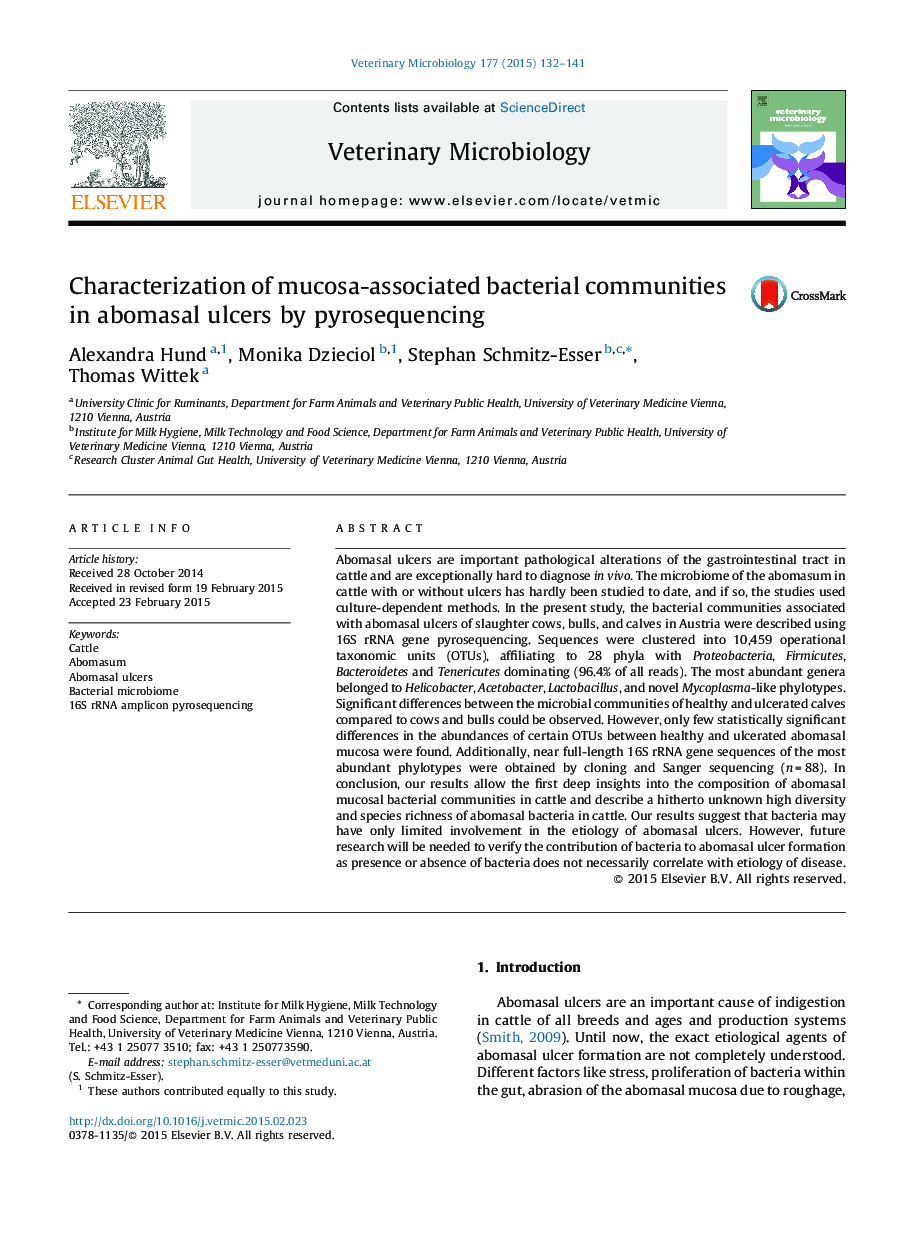| کد مقاله | کد نشریه | سال انتشار | مقاله انگلیسی | نسخه تمام متن |
|---|---|---|---|---|
| 5799936 | 1555351 | 2015 | 10 صفحه PDF | دانلود رایگان |
- Characterization of abomasal mucosa-associated communities in cattle with ulcers.
- Highly diverse abomasal mucosal bacterial communities were found.
- We show distinct differences in mucosal microbiota between adult and young cattle.
- Only few differences between microbial communities of healthy and ulcerated abomasa.
Abomasal ulcers are important pathological alterations of the gastrointestinal tract in cattle and are exceptionally hard to diagnose in vivo. The microbiome of the abomasum in cattle with or without ulcers has hardly been studied to date, and if so, the studies used culture-dependent methods. In the present study, the bacterial communities associated with abomasal ulcers of slaughter cows, bulls, and calves in Austria were described using 16S rRNA gene pyrosequencing. Sequences were clustered into 10,459 operational taxonomic units (OTUs), affiliating to 28 phyla with Proteobacteria, Firmicutes, Bacteroidetes and Tenericutes dominating (96.4% of all reads). The most abundant genera belonged to Helicobacter, Acetobacter, Lactobacillus, and novel Mycoplasma-like phylotypes. Significant differences between the microbial communities of healthy and ulcerated calves compared to cows and bulls could be observed. However, only few statistically significant differences in the abundances of certain OTUs between healthy and ulcerated abomasal mucosa were found. Additionally, near full-length 16S rRNA gene sequences of the most abundant phylotypes were obtained by cloning and Sanger sequencing (n = 88). In conclusion, our results allow the first deep insights into the composition of abomasal mucosal bacterial communities in cattle and describe a hitherto unknown high diversity and species richness of abomasal bacteria in cattle. Our results suggest that bacteria may have only limited involvement in the etiology of abomasal ulcers. However, future research will be needed to verify the contribution of bacteria to abomasal ulcer formation as presence or absence of bacteria does not necessarily correlate with etiology of disease.
Journal: Veterinary Microbiology - Volume 177, Issues 1â2, 15 May 2015, Pages 132-141
